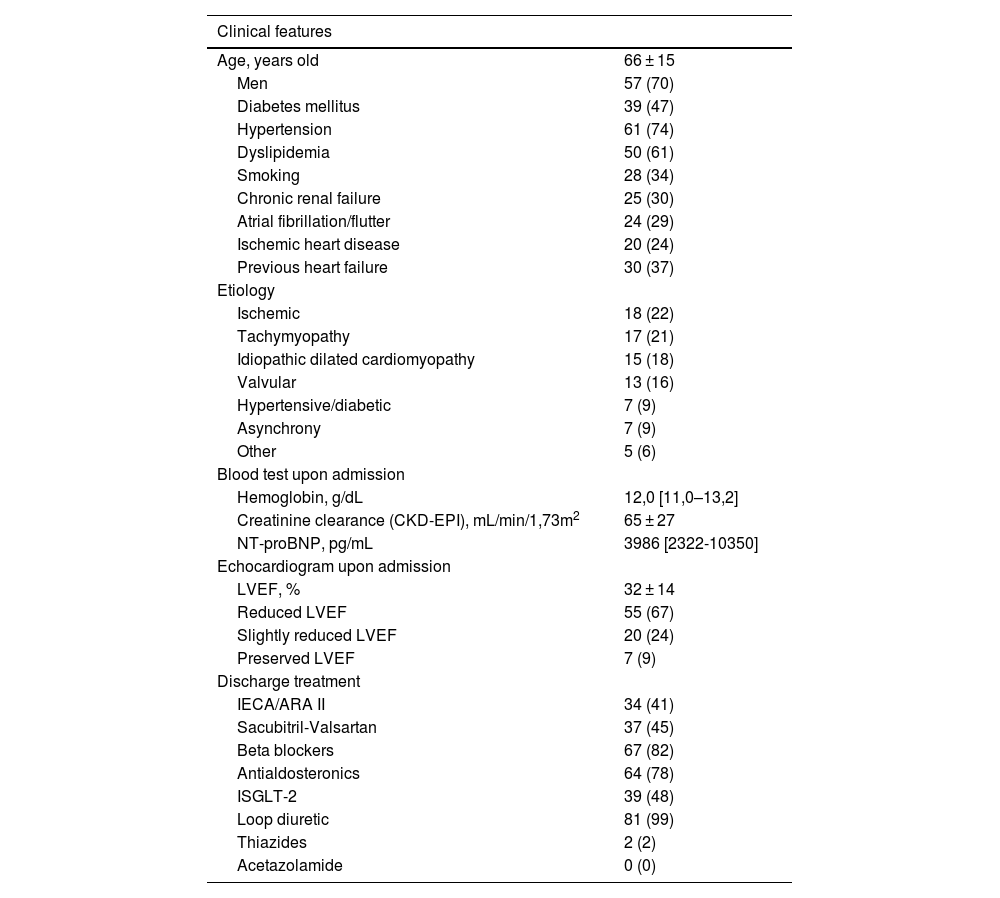Persistent congestion after heart failure (HF) discharge is associated with a higher risk of readmissions.
Material and methodseighty-two patients included after HF discharge. The aim of the study was to characterize semiquantitatively the degree of pulmonary congestion and its changes, describing the relationship between these findings and diuretic management.
ResultsOn the first visit, despite the absence of clinical congestion in the majority of patients, half of the had some degree of pulmonary congestion by ultrasound. After global assessment in this initial visit (clinical and ultrasound) the diuretic was lowered in 50 patients (60%), kept the same in 16 (20%) and it was increased in the rest. In the 45 patients without ultrasound congestion, diuretic reduction was attempted in 80%, being this strategy successful in the majority of them.
ConclusionsLung ultrasound, using simple quantification methods, allows its real incorporation into clinical practice, helping us in the decision making process.
La congestión persistente tras el alta por insuficiencia cardiaca (IC) se asocia a mayor riesgo de reingresos siendo necesaria su valoración de forma precisa.
Material y métodos: 82 pacientes incluidos tras el alta por IC con el objetivo de caracterizar de forma sencilla y semicuantitativa el grado de congestión pulmonar y sus cambios, describiendo la relación entre dichos hallazgos y el manejo diurético.
ResultadosEn la visita posalta, pese a la ausencia de congestión clínica en la mayoría de pacientes, la mitad presentaba algún grado de congestión pulmonar por ecografía. Tras valoración ecográfica y clínica en esta visita inicial se bajó el diurético en 50 pacientes (60%), se mantuvo igual en 16 (20%) y se aumentó en el resto. En los 45 pacientes sin congestión ecográfica, la bajada de diuréticos se intentó en el 80% siendo exitosa esta estrategia en la mayoría de ellos.
ConclusionesLa ecografía pulmonar, usando métodos de cuantificación sencillos permite su incorporación real a nuestra práctica clínica ayudándonos en la toma de decisiones.
Article
Diríjase desde aquí a la web de la >>>FESEMI<<< e inicie sesión mediante el formulario que se encuentra en la barra superior, pulsando sobre el candado.

Una vez autentificado, en la misma web de FESEMI, en el menú superior, elija la opción deseada.

>>>FESEMI<<<








